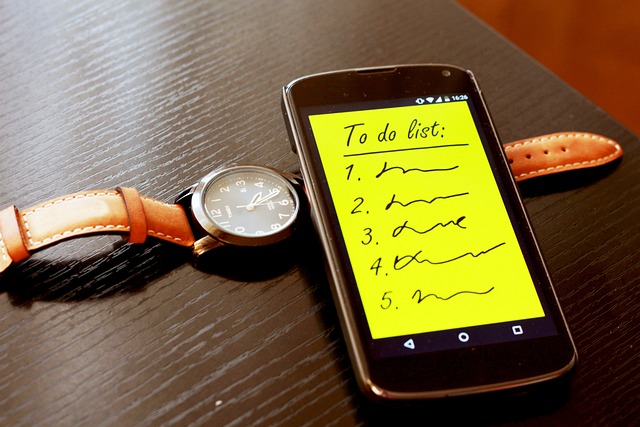
In today’s fast-paced work environment, effective task management is crucial for productivity and success. With numerous responsibilities vying for our attention, it can often feel overwhelming. However, with the right strategies and tools, you can streamline your daily tasks and improve your efficiency. In this blog post, we will explore various methods to organise your daily tasks at work, including prioritisation techniques, the use of digital tools, and the importance of breaks. We will also discuss how the Organised Care App can simplify the process of caring for someone while juggling work responsibilities.
Before diving into the methods of organising daily tasks, it is essential to understand why organisation is vital. A well-structured approach to your tasks can lead to:
One of the first steps in organising your daily tasks is prioritisation. Not all tasks carry the same weight or urgency, and identifying which ones are most critical can help you focus your efforts where they matter most.
A popular method for prioritising tasks is the Eisenhower Matrix, which divides tasks into four categories:
By categorising your tasks using this matrix, you can focus on what truly matters and avoid wasting time on less critical activities.
Another effective prioritisation technique is the ABCDE method, where you label tasks as follows:
This method encourages you to assess the importance of each task and take appropriate action, whether that be completing, delegating, or discarding it.
Once you have prioritised your tasks, the next step is to create a daily to-do list. A well-structured list will keep you focused and provide a sense of accomplishment as you complete each task.

In the digital age, there are countless tools available to help you organise your tasks. These tools can enhance your productivity and keep you on track.
Applications like Trello, Asana, and Todoist offer intuitive interfaces for managing tasks. They allow you to create lists, set deadlines, and track progress. These platforms often include collaboration features, making them ideal for team projects.
Using a calendar app, such as Google Calendar or Outlook, can help you visualise your schedule. You can block out time for specific tasks, set reminders, and ensure that you allocate time for breaks and personal commitments.
For those who balance work with caregiving responsibilities, the Organised Care App can be a game changer. This app simplifies the process of managing care tasks, allowing you to schedule appointments, track medications, and communicate with healthcare professionals all in one place. By centralising care-related responsibilities, the Organised Care App helps you maintain focus on your work tasks without the stress of forgetting important caregiving duties. Its user-friendly interface ensures that you can quickly access information, making it easier to coordinate care while managing your workload effectively.
Time blocking is a technique that involves scheduling specific blocks of time for different tasks or activities throughout your day. This method can significantly enhance your productivity by ensuring that you dedicate uninterrupted time to each task.

In order to effectively organise your daily tasks, it is essential to create an environment that minimises distractions. This includes both physical and digital distractions.
While it may seem counterintuitive, taking regular breaks can actually enhance your productivity. Working for long stretches without a break can lead to burnout and decreased focus.
One effective method for incorporating breaks is the Pomodoro Technique, which involves working for 25 minutes followed by a 5-minute break. After completing four cycles, take a longer break of 15-30 minutes. This technique helps maintain focus and energy levels throughout the day.
In addition to breaks, practising self-care is essential for maintaining overall well-being. Ensure you are:
By integrating self-care into your routine, you can enhance your resilience against stress and improve your overall performance at work.
To maintain an effective task management system, it is essential to regularly review and reflect on your progress. This practice allows you to assess what is working, what isn’t, and how you can improve.
Set aside time each week to review your accomplishments and challenges. Ask yourself the following questions:
Based on your reflections, be willing to adjust your strategies. If a particular method isn’t yielding the desired results, consider trying a different approach. Flexibility is key to effective task organisation.
Finally, do not hesitate to seek support and collaborate with others. Whether you work in a team or manage tasks independently, sharing responsibilities can lighten your workload and improve outcomes.

Utilise collaborative tools such as Slack, Microsoft Teams, or Google Workspace to enhance communication and coordination with colleagues. These platforms allow for real-time updates and sharing of tasks, making it easier to work together efficiently.
If you find yourself overwhelmed, consider delegating tasks to others. Trusting your colleagues with responsibilities not only lightens your load but also fosters teamwork and collaboration.
Organising daily tasks at work is an essential skill that can lead to increased productivity, reduced stress, and a better work-life balance. By prioritising tasks, creating effective to-do lists, utilising digital tools, implementing time blocking, minimising distractions, taking breaks, practising self-care, regularly reviewing your progress, and seeking support, you can transform your approach to task management.
In particular, tools like the Organised Care App can significantly ease the burden of caregiving responsibilities, allowing you to focus on your work without neglecting important care tasks. By adopting these strategies, you will not only enhance your efficiency but also cultivate a more fulfilling and balanced work life.
Remember, effective organisation is not a one-size-fits-all approach. Experiment with different techniques and find what works best for you. With time and practice, you will develop a personalised system that enhances your productivity and helps you achieve your professional goals.